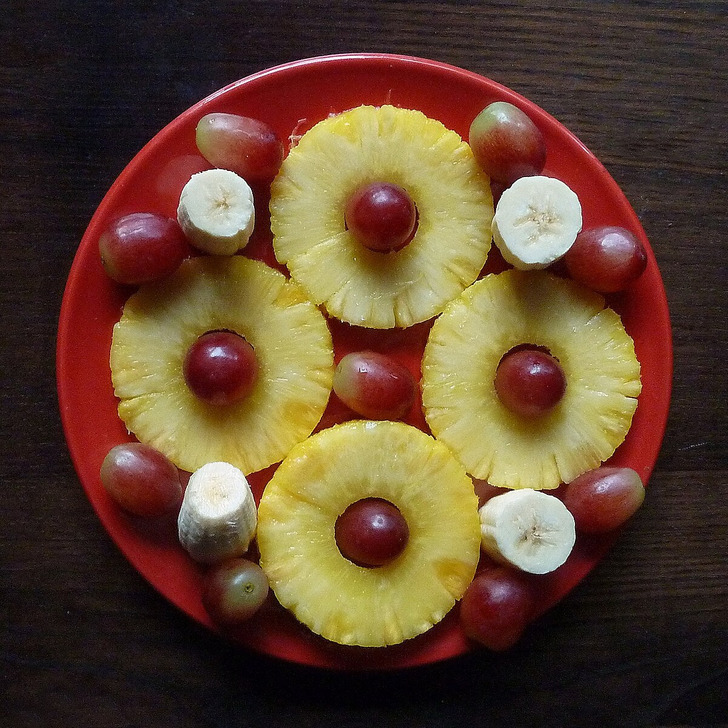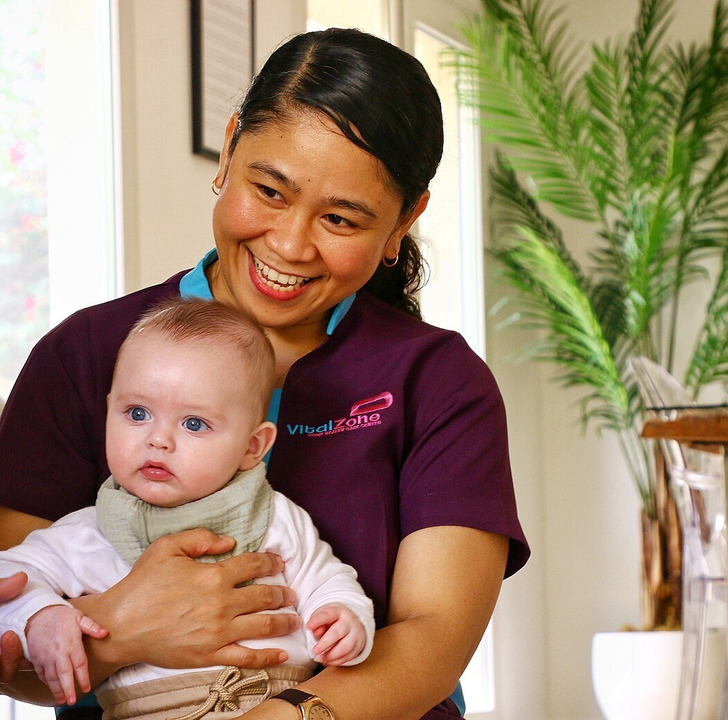Trypophobia is a relatively lesser-known psychological phenomenon characterized by an intense aversion or fear of clustered patterns of small holes, bumps, or irregular shapes. While not officially recognized as a distinct mental disorder in the Diagnostic and Statistical Manual of Mental Disorders (DSM-5), trypophobia has gained attention in recent years due to its prevalence and the emotional distress it can cause in individuals who experience it.
People with trypophobia often react strongly to images or objects that exhibit repetitive and closely packed small holes, such as lotus seed pods, honeycombs, or certain types of coral. The term “trypophobia” itself is derived from the Greek words “trypo,” meaning “hole,” and “phobia,” indicating an irrational fear. It’s important to note that trypophobia is not limited to specific shapes or textures; it encompasses a wide range of stimuli, and triggers can vary from person to person.
The fear response associated with trypophobia may manifest as feelings of discomfort, anxiety, nausea, or even panic attacks. Some individuals may go to great lengths to avoid situations or objects that could trigger their trypophobia, impacting their daily lives. While the exact cause of trypophobia remains unclear, researchers speculate that it may be linked to evolutionary factors, as some dangerous animals and plants exhibit similar patterns in nature.
Social media and the internet have played a significant role in popularizing trypophobia, with numerous online communities sharing images and discussions related to this phenomenon. The widespread dissemination of trypophobic triggers has led to increased awareness and recognition of this condition. However, it’s crucial to approach the topic with sensitivity, as exposure to triggering images can genuinely distress individuals who experience trypophobia.
Despite its prevalence, trypophobia remains an area of ongoing research, and professionals in psychology and psychiatry continue to explore its origins, manifestations, and potential treatments. Understanding trypophobia can contribute to more compassionate and informed discussions about mental health, promoting empathy and support for those who grapple with this unique fear.
17 Nannies Whose Adventures Could Fill a Best-Selling Novel
Some people view nannying as a simple job. Tasks like feeding children, reading them stories, and putting them to bed seem routine. However, that’s not always true. The people featured in our article shared their experiences caring for other people’s children, and now we wouldn’t dream of calling this profession dull.

I was 13 and was babysitting my neighbors’ kids. It was my first time, so the parents walked me through all the rules about the bathroom, TV, food, bedtime, etc. Just as the parents were taking off for the night, the mom came back in and whispered to me, “Don’t go into the basement.” As a teenager in the 80s, my mind went to all of the scariest movies that had basements. I avoided the door to the basement all night until I had put the kids to bed.
Then I walked slowly to the door and put my ear against it. I heard what sounded like whimpering. And then it sounded like sad laughing. I ran to the couch and started watching TV to get my mind off of it, but then I heard something fall in the basement and knew someone was down there. I really don’t know how I got the courage/stupidity to do it, but I went over and opened the door. The whining instantly got louder.
I went down just 3 or 4 stairs, so I could peek down… and I saw… a goat. Not a ghost. A goat. As soon as the goat saw me, he started bleating loudly. It scared me. I went upstairs, and the goat was still bleating loudly, so much that it woke up the kids.
The oldest girl came out and said, “Did you open the door to the basement?” I said, “Yeah, why?” She said, “When you do that, Carlos thinks you’re going to feed him, and he starts yelling.” Thank god I knew it was a goat first, because if she had said that before I went down, I would’ve thought Carlos was some kidnapped person in the basement who would yell for food.
It was very funny to me. The mom came home and I told her what happened, and she almost died laughing. They were repairing the goat pen and had to keep him in the basement for a few days. I still remember every moment of that night vividly. © Unknown author / RedditIn my early twenties, I would babysit a set of twins on the weekend once in a while. Their mom was super beautiful, and she was always going on dates.
One night, she told me she met a guy and was going on a date with him. She left at 6 and said she’d be back around midnight. Well, pushing 1 a.m., I’m thinking maybe she’s running late. 2 a.m., 3 a.m… I’m calling and calling her and finally her phone just goes to voice mail. I wake up, and it’s 7 a.m. and she still isn’t back.
I finally found the grandparent’s number in an address book. I call her parents, and they don’t even seem phased. They just seem annoyed like this is business as usual but tell me they’ll be over to sit with the twins, so I can leave. I call the non-emergency police number and explain what’s going on and that the grandparents are on their way.
I stick around for another hour, and then she pulls up wearing a men’s t-shirt, and heels, and she’s laughing. She says jokingly, “Oh my god! Call the police!” I never sat for her again. She just ended up staying with the guy all night and turned her phone off so she couldn’t be bothered. She truly thought I’d dismiss it like it was no big deal. © Kikabennet / Reddit

- The dad of the kids I watched liked me on Tinder. Then, when I told his wife, and she didn’t believe me, he convinced her that “his Facebook was hacked.” The kids were almost always wonderful. © marymoon77 / Reddit
- I work as a nanny in the family of a big businessman. At first, I worked several times a week, then I started living in their house. The head of the family works almost round the clock, his wife doesn’t notice anything but clothes, spas, and fitness.
Yesterday, their 5-year-old son stole money from his father’s safe, came to me, and said we should run away together. I returned the money immediately, but how to explain to a child why I love him more than his mother, I don’t know… © Overheard / Ideer - I’m a nanny, and I heard her first word (it was hippo). But the family won’t ever know that. Some secrets are better to keep. © positivityfox / Reddit
- First babysitting job at 13. Four kids. My parents gave me a whole fresh salmon to COOK and serve the kids. I learned that day that salmon has pin bones when I had to pull some out of the 3-year-old’s throat while simultaneously calling my parents down the road because I didn’t know what to do, as he was coughing and gasping for air. He was fine, but I think I lost 10 years of my life that day. © nah2daysun / Reddit
- A lady tried to dump 2 extra kids on me without paying when she realized I was babysitting her neighbor’s kids. Her rationale was that I was already babysitting 2 kids and 2 more wasn’t that much, so I should watch her kids for free and let them eat her neighbor’s food. © CaptDeliciousPants / Reddit

- I’m not a nanny, but I’ve been babysitting a girl on and off from when she was 5 to 7 now.
Her: What is that?
Me: Pineapple
Her: Oh, I’ve never had pineapple.
Me: Do you want to try it?
She does this about everything, too. I asked her mom if she had ever had pineapple, and she was like of course, she has! Then I realized she was just trying to eat my food. © Kacidillaa / Reddit - I nannied for a wealthy couple, and the husband had a study in the house that the wife joked about never being allowed in. Now, I’m nosy, and I was curious about why you wouldn’t let someone in a study, especially since it looked like a fairly normal room: big desk, walls covered in bookshelves, books of architecture everywhere.
So one day I just roamed around in there. I didn’t find anything, and I was kinda disappointed, but then I grabbed a book off one of the shelves. The thing had money pressed between its pages — about $500 if I had to guess. Picked up another book, and found the same thing.
I think I checked like ten different books, and every single one had money hidden in it. Still not sure if the dude was just paranoid about banks or if he was intentionally hiding money from his wife. © Unknown author / Reddit - I babysat two neighbor kids one time. I had a lot of experience babysitting, but it was my first time with this particular family. The little boy was about 5, and the little girl was maybe 7. Their parents left very specific instructions for bedtime, and they were kept on a very strict schedule. I thankfully had my best friend with me at the time, we were probably 15.
Bedtime came around, and after several warnings, we told them it was time to get upstairs, get into PJs, and carry on with their bedtime routine. They went ballistic. The little boy started tearing the cushions off their leather couch, tossing them everywhere, and biting a hole in the arm of the couch. While I was trying to deal with him, my best friend was trying to get the little girl upstairs when she ran into the kitchen, dumped their entire mop bucket of dirty water on the floor, and started sliding around in it. As soon as the couch-chewer saw the fun his sister was having, he joined in.
I ended up calling my mom for reinforcement, and never babysat for that family again. © soxxyrocks / Reddit

- So the father of the kid works for a major athletic apparel company, and every year they need to test the upcoming year’s potential pieces. To do that, the company sends one of every potential piece to all female employees and female spouses.
Well, the mother is pregnant right now and can’t fit into any of the items, so the father made me a cup of tea and asked me to sit down in the living room (what he does whenever he wants to talk to me about something) and says, “I know we’re not paying you to do this, but would you be willing to test all of the sample pieces my company sent me? You can keep them afterward.”
Yes! Y’all, no kidding, he just handed me 6 boxes of athletic clothing that have to total thousands of dollars. © pineappleprincesspie / Reddit - I was in the living room, watching Sister, Sister,when all of a sudden I heard a man say, “Hello.” I check the front door and look out the window at the driveway, the parents aren’t home. Go upstairs and check the kids, they’re both still in bed.
Go back downstairs, and hear it again, from the darkened dining room, “Hello, I am Armando.” They had a parrot. © Unknown author / Reddit - I only babysat once, and it was nothing horrible. These people had a huge rich house, and everything looked great, but when it was time for the kids’ bed, I figured I’d read them a bedtime story. I searched through that magnificent house and couldn’t find a single solitary book. © TRIGMILLION / Reddit
- So, it is that time of the month for me. I go into the bathroom, and while unwrapping a feminine hygiene product, the kid yells from outside the door, “I can hear you eating candy in there!” It made my day and made me wish that I was eating candy. © HalleysComet5 / Reddit

- I was working as a nanny, and the children’s mother once told me, “My husband doesn’t think we should pay you for when the girls are sleeping…” They were 4 months and 2 years old.
I was a junior in high school and responded, “Okay, so should I duck out once I tuck them in?” I wouldn’t have done that, but I think at that point she realized how ridiculous her request was. © reckate / Reddit - I had a phone interview with a mom that went well, so we met in person for a second interview with her husband and 4 children. It went well until she explained her nanny was fired for having an affair with her husband and how their new nanny needed better morals and to limit her interaction with her husband (who was sitting there the whole time with us).
I’ve never felt more awkward in my whole life as she told me that I’m pretty but thankfully not his type as he just nodded his head. I just find it irritating how it’s the nanny’s fault when her husband also had the affair, and how the nanny needs morals when her husband doesn’t. So yeah, definitely not accepting this job! © thisisdevon- / Reddit
Working as a regular nanny is challenging enough, so imagine being a nanny for a royal family. There are strict rules to follow, such as being allowed to wear only specific types of jewelry.



Leave a Reply